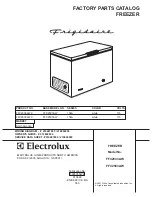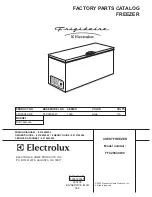
7.3 Defrosting of the freezer
CAUTION!
Never use sharp metal tools
to scrape off frost from the
evaporator as you could
damage it.
Do not use a mechanical
device or any artificial
means to speed up the
thawing process other than
those recommended by the
manufacturer.
About 12 hours prior to
defrosting set a lower
temperature in order to build
up sufficient chill reserve in
case of any interruption in
operation.
A certain amount of frost will always form
on the freezer shelves and around the
top compartment.
Defrost the freezer when the frost layer
reaches a thickness of about 3-5 mm.
1. Switch off the appliance or pull out
electrical plug from the wall socket.
2. Remove any stored food and put it in
a cool place.
CAUTION!
A temperature rise of the
frozen food packs during
defrosting may shorten
their safe storage life.
Do not touch frozen
goods with wet hands.
Hands can freeze to the
goods.
3. Leave the door open. Protect the
floor from the defrosting water e.g.
with a cloth or a flat vessel.
4. In order to speed up the defrosting
process, place a pot of warm water in
the freezer compartment. In addition,
remove pieces of ice that break away
before defrosting is complete.
5. When defrosting is complete, dry the
interior thoroughly.
6. Switch on the appliance and close
the door.
7. Set the temperature regulator to
obtain the maximum coldness and
run the appliance for at least 3 hours
using this setting.
Only after this time put the food back into
the freezer compartment.
7.4 Period of non-operation
When the appliance is not in use for long
period, take the following precautions:
1. Disconnect the appliance from
electricity supply.
2. Remove all food.
3. Defrost the appliance.
4. Clean the appliance and all
accessories.
5. Leave the door open to prevent
unpleasant smells.
8. TROUBLESHOOTING
WARNING!
Refer to Safety chapters.
8.1 What to do if...
Problem
Possible cause
Solution
The appliance does not op‐
erate.
The appliance is switched
off.
Switch on the appliance.
ENGLISH
13














































